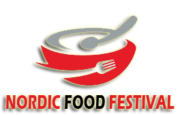Savvy Cafeteria Management: Key to Dining Delight

A key component of efficient canteen catering services is menu planning. In addition to satisfying workers’ hunger, a thoughtfully designed menu raises morale and productivity levels. Examine the fundamentals of effective cafeteria menu planning, providing helpful advice and methods for making the most of this vital aspect of office dining.
Understanding Employee Preferences and Dietary Needs
Knowing the dietary requirements and preferences of the staff is one of the cornerstones of a well-planned cafeteria menu. Surveys and feedback sessions can yield important information about the kinds of foods that employees like to eat and any dietary concerns they may have. Cafeteria managers can ensure that their menus satisfy a wide range of tastes and needs by including popular dishes and providing various options that cater to different dietary preferences, such as vegetarian, vegan, gluten-free, and allergen-friendly choices.
Seasonal and Local Ingredients: Freshness Matters
Cafeteria menus featuring seasonal and locally sourced ingredients improve the quality and freshness of the food and help out local suppliers and farmers. In addition to being more plentiful and reasonably priced during its season, seasonal produce also tends to be more flavorful and nutritious. Cafeteria managers can encourage employees to try new dishes and keep menus interesting while promoting sustainability and community engagement by rotating menu items based on seasonal availability.
Balancing Nutrition and Taste
It is crucial to balance taste and nutrition when creating cafeteria menus. Prioritising the nutritional value of the food served is just as important as serving tasty and enjoyable dishes. Including a range of nutrient-dense foods, such as fruits, vegetables, whole grains, and lean proteins, guarantees that workers get the essential nutrients they require to power their workday efficiently. Furthermore, providing healthier substitutes for conventional favourites, like baked goods rather than fried ones or salads with lots of protein-rich toppings, encourages staff members to make better decisions without compromising flavour.
Menu Diversity: Beyond the Basics
Maintaining employee engagement and satisfaction with cafeteria offerings requires a varied menu. Beyond the staples like sandwiches and salads, cafeteria managers should regularly introduce new and inventive dishes to pique employees’ interest and broaden their culinary horizons. Consider introducing international cuisines, themed menu days, or chef-inspired specials to spice up the dining experience and add excitement and diversity. Cafeteria management providers can create a dynamic dining environment that promotes exploration and enjoyment by consistently changing and expanding the menu.
ALSO READ: Comprehensive Guide To Running Your Own Staff Cafeteria

Flexibility and Customisation
Individual preferences and dietary restrictions must be accommodated by offering options for flexibility and customisation. By providing build-your-own stations or made-to-order options, employers enable staff members to customise meals based on their dietary requirements and personal preferences. Giving staff members the freedom to personalise their meals—from protein to toppings to sauces—improves the dining experience and guarantees everyone will find something they like.
Promoting Health and Wellness
Cafeteria menus are a prime factor in encouraging the health and well-being of staff members. Cafeteria managers can assist staff in making decisions that support their health objectives by emphasising healthy options and clearly labelling ingredients and nutritional data. Offering wellness initiatives or educational materials encouraging a healthy diet can help staff members make wise food decisions and lead healthy lifestyles.
Feedback and Continuous Improvement
Employee feedback is crucial for improving cafeteria menus and ensuring they continue to suit employees’ changing needs and preferences. Cafeteria managers can pinpoint areas for improvement and implement changes by regularly soliciting feedback via surveys, suggestion boxes, or focus groups. Giving staff feedback top priority shows that you are dedicated to giving them a dining experience that lives up to their expectations, whether that means changing portion sizes, introducing new menu items, or attending to particular dietary questions.
Conclusion
Planning a cafeteria menu that works is a complex process that involves considering employee preferences, nutritional balance, and menu diversity. Canteen catering services can create menus that satisfy staff members while promoting health and wellness, balancing nutrition and taste, promoting seasonal and local ingredients, understanding employee preferences and dietary needs, asking for feedback for ongoing improvement, and offering a diverse and customisable menu. Not only is efficient cafeteria menu planning necessary to support workplace productivity, but it also fosters a positive dining experience that raises morale and employee engagement.
Visit Pro*3 Institutional Catering to make the shift to a dining experience that goes beyond the ordinary.




